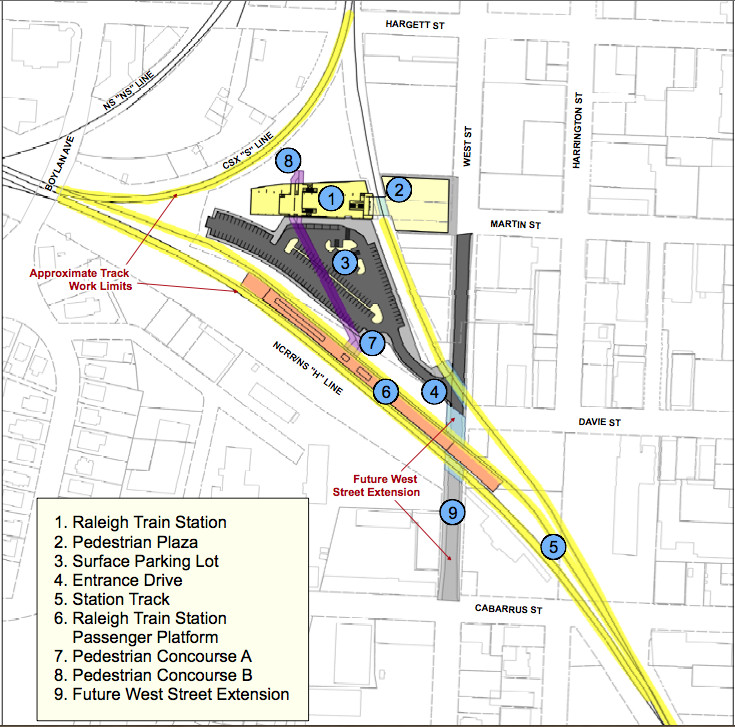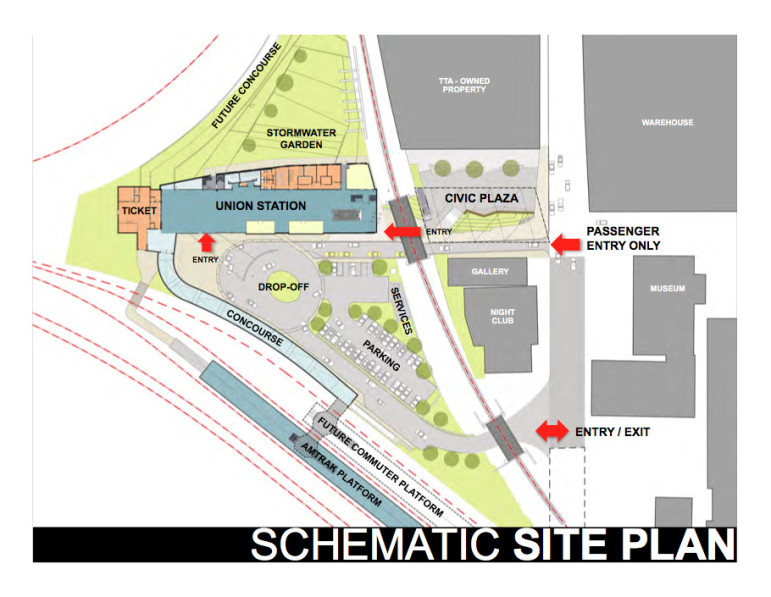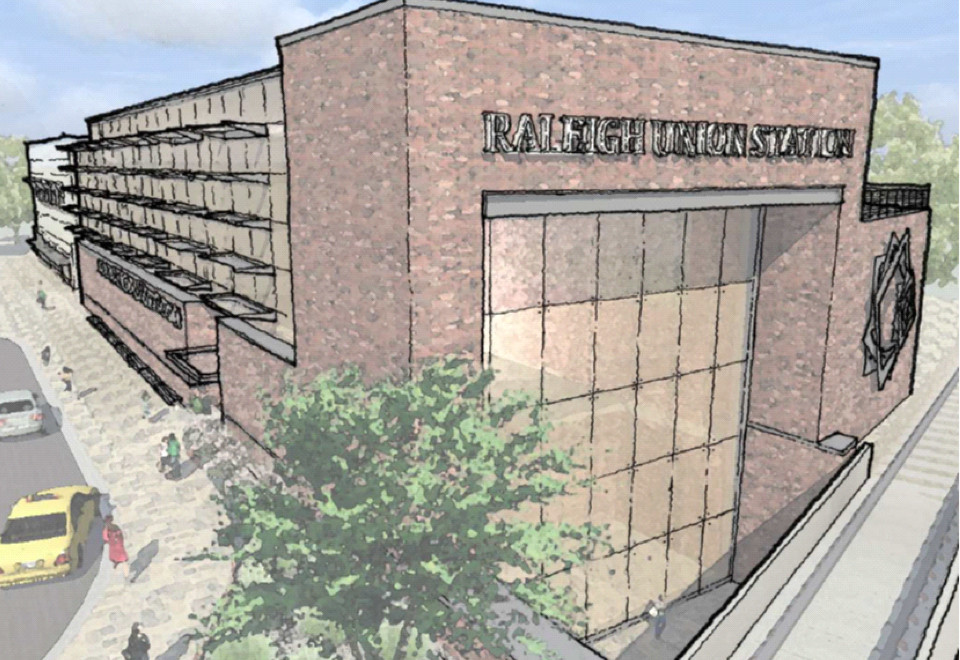The price tag for Raleigh’s Union Station could go up, forcing the city to raise additional capital to bring the vision of a multi-modal transit center to life in the downtown Warehouse District.
To date the city has raised $66 million of the estimated $73 million needed to complete the project, which involves relocating the existing station, renovating a few surrounding buildings, adding bus terminals and updating miles of existing train tracks for added Amtrak passenger rail, and, potentially, light rail in the future.
“We are hopeful that the project will not exceed $73 million, but it’s very difficult when you’re dealing with a project like this that you won’t see project costs go up,” explained Raleigh Planning Director Mitchell Silver.
Although the Union Station plan is still in the early phases of design, the city has collected about two-thirds of the money, but is still about $6.6 million short of its goal. In September, the City of Raleigh received an additional $30 million in funding, including a $10 million Transportation Investment Generating Economic Recovery (TIGER) Discretionary Grant; $15 million in redirected Federal Railroad Administration American Recovery and Reinvestment (ARRA) Piedmont Improvement funds and an extra $5.5 million in funds from a 2012 TIGER Discretionary Grant, bringing the full 2012 TIGER grant total to $26.5 million.

An early vision of the Union Station layout.
The reallocated $15 million comes from the Piedmont Improvement Program, a state DOT plan to improve rail service between Charlotte and Raleigh. By accepting the Federal Stimulus Program funding last year, the state agreed to complete a freight rail project in Charlotte by 2015. The state realized it could not meet that deadline and received permission a few months ago to send $15 million of the funding toward the Union Station project.
“Our hope is that between federal, state and city funding, we’ll be able to close this gap and not see an increase in project costs,” Silver said.
Prior to this last round of funding, the City directly received a $466,075 Federal Railroad Administration Planning Grant to cover this current design phase. It was also awarded $250,000 from the state DOT Planning Grant Matching Funds; a matching $250,000 investment from the City of Raleigh and $9 million from the NC DOT TIGER 2012 Matching funds. The city also allocated $5.75 million from its own budget.
Cost Uncertainty the Norm
In the early design phase, it’s not uncommon for project costs go up or down. When costs go up, it’s likely due to a widening of project scope or other previously unknown conditions that arise during construction, independent architectural experts said. The only thing you can do is hope the built in contingencies cover the unexpected, seek more funding or break the project down into phases.
“You try to address the unknown conditions first, so you don’t have too much money in allowances out there impacting the overall project,” explained architect, Michael J. Bjornberg,
associate vice president of HGA, an integrated architecture, engineering and planning firm based in Minneapolis.
The firm recently completed construction and restoration on the Union Depot in St. Paul, at a projected cost of $243 million.
“The other areas that can often impact whether a project’s cost increases are if there’s a scope change of some sort,” said Bjornberg, pointing to a possible late edition of light rail to the project as an example.
Tim Williams, Project Manager with ZGF Architects in Seattle, the firm responsible for the renovations at Seattle’s historic King Street Station, said, “It’s not uncommon that the desired scope and funding are not always aligned. Generally, speaking what is going to be included and what is going to be excluded is a balancing act between funds available and desired scope.”
The King Street Station project cost $50 million to renovate.
Regardless, of the funding challenges, Silver said the City is 100 percent committed to bringing the Union Station project to life, even if it means finding additional funding or completing the project in stages.
“For example, the city would consider other options like utilizing temporary buildings in lieu of constructing permanent facilities until additional money could be secured,” Silver said.

Provided by Clearscapes
One of the early site plan renderings for Union Station.
But even with the City’s devotion, the project is not without its opposition. Americans for Prosperity (AFP), a conservative, grassroots advocacy group, said they do not support the plan.
“The City of Raleigh has an uncontrollable appetite for spending taxpayer dollars,” said Chris Marie Farr, acting state director at the Raleigh-based AFP. “If there is actually a need for a bigger train station, I’m sure they could build one that is much less than this astronomical dollar amount. They need a functional, safe building—not a masterpiece.”
Farr said a protracted recession and high jobless rates should cause the city to think twice about spending more taxpayer dollars.
“The City Council and mayor are very cavalier about spending other people’s money in their quest to leave a downtown legacy for themselves,” Farr said.
Raleigh residents will hear more about the plans during the next public meeting, which has been rescheduled from this month to sometime before the end of the year. The meeting has been pushed back to allow for detailed comments from its railroad partners regarding track switching.
“Track work is the ‘X’ factor,” said Silver.
In the interim, project design consultants continue to work on the downtown bus facilities master plan and the West Street extension.
By year’s end the project will have reached the 65 percent design phase mark, giving the public a better sense of the cost of all project elements including construction, which is slated to get under way early next year.
